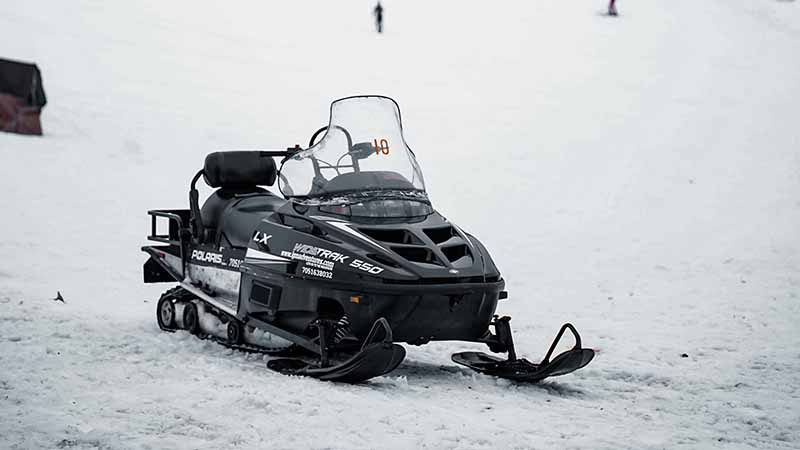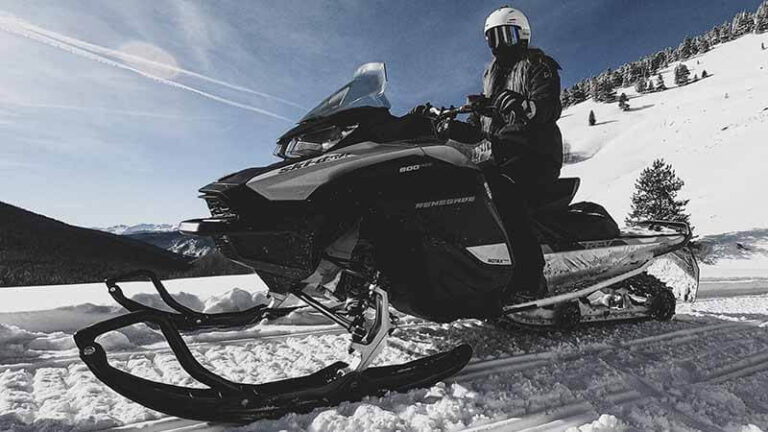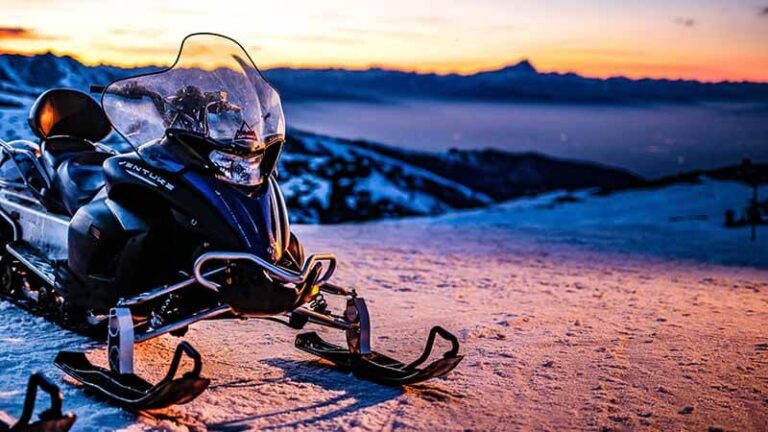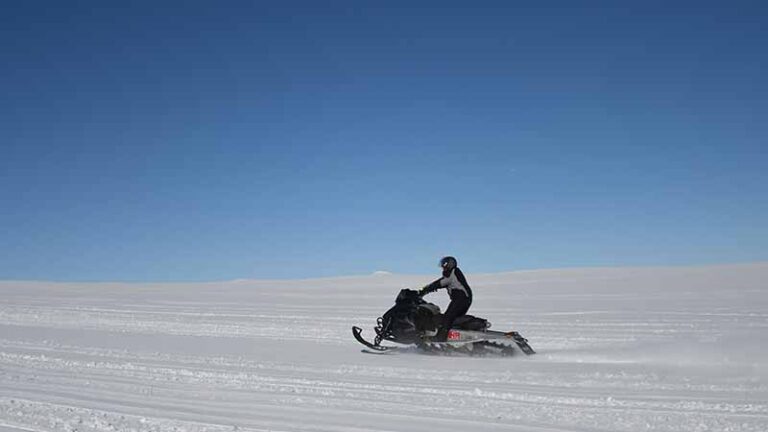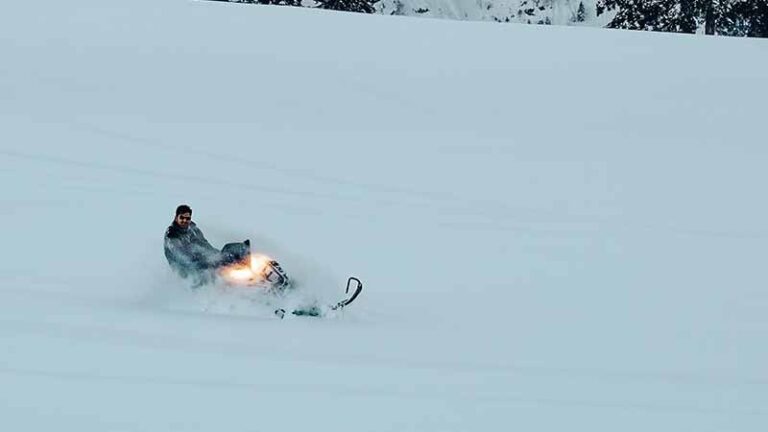When Was the Snowmobile Introduced?
Snowmobiles have grown in popularity and significance in modern times for a variety of reasons. These adaptable vehicles are specifically intended for driving on snow and ice, letting people traverse huge snowy landscapes and reach distant regions that would otherwise be inaccessible. Snowmobiles have grown in popularity in both recreational and functional settings, providing exhilarating adventures as well as practical transit options in icy regions.
The adaptability of snowmobiles is one of the primary reasons for their appeal. They are frequently utilized for enjoyment, attracting winter sports lovers and thrill-seekers who enjoy activities like snowmobiling excursions, racing, and freestyle riding. Snowmobiles offer a one-of-a-kind way to explore winter landscapes, from snowy woods and mountains to frozen lakes and remote wilderness places. Because of their speed, dexterity, and ability to cross difficult terrain, they are great for recreational purposes.
Snowmobiles are also valuable for practical applications, particularly in areas with considerable snowfall. They are widely utilized for transportation in remote locations where standard vehicles may have difficulty navigating deep snow. Snowmobiles are used by emergency services, search, and rescue teams, and utility companies to reach isolated regions during winter emergencies or to keep infrastructure operational in icy weather. They are also used in industries such as forestry, mining, and winter tourism to provide efficient and dependable transportation.
To understand the origins and early development of snowmobiles, we must return to a time when snow mobility was far more difficult. People faced major challenges when navigating snow-covered terrains in locations with lengthy, harsh winters. Traditional techniques, such as sleds and skis, have speed, distance, and capacity limitations, making long travels or transporting heavy goods difficult.
As technology advanced, inventors and engineers began to investigate ways to mechanize snow travel. They aimed to develop vehicles capable of traversing icy terrain more efficiently, effectively surpassing the constraints of existing approaches. These early attempts at motorized snow transport established the groundwork for the snowmobile’s development.
Snowmobiles first appeared in the late nineteenth and early twentieth century, when different innovators and tinkerers experimented with various designs. These trailblazers attempted to develop vehicles capable of moving smoothly and effectively over snow and ice, hence improving mobility and transit alternatives.
In this look at the origins and early evolution of snowmobiles, we’ll look at the contributions of inventors like Joseph-Armand Bombardier, who helped shape the present snowmobile industry. We will look at the evolution of snow vehicles, from early steam-powered sleds through the pioneering B7 Snowmobile, which represented a watershed moment in snow mobility.
We may learn about the scientific breakthroughs, innovations, and social and cultural aspects that produced these incredible devices by studying their history. Investigating snowmobiles’ early origins allows us to comprehend their revolutionary impact on winter transportation, recreational activities, and the communities that love them.
The Early Days of Snow Travel
Traditional Methods of Winter Transportation
People relied on numerous conventional means to manage snowy places in the early days of snow travel. Sleds and skis, for example, provided a means of transportation and mobility in harsh winter circumstances.
Overview of traditional winter transportation methods
- Sleds: Sleds have been used as a useful mode of winter transportation for millennia. They had a flat bottom constructed of wood or other materials that allowed them to glide over the snow. Individuals or animals pulled or pushed sleds, which served as a dependable form of transport for goods and people. They were particularly handy for transporting huge items over snowy terrain.
- Skis: Skis have a lengthy history and were designed as a viable winter travel solution. They were first utilized by indigenous peoples in snowy areas. Individuals could distribute their weight across a larger surface area using skis, reducing sinking into heavy snow and allowing them to move more efficiently. Skis gave better mobility than walking or using sleds, allowing people to travel longer distances across snowy terrain.
Limitations and challenges faced by people in snowy regions
- Speed and Distance Restrictions: Traditional modes of winter transportation, such as sleds and skis, have speed and distance restrictions. Moving through the deep snow was physically and time-consuming, restricting the speed at which people could go. Long treks through snowy terrain demanded a lot of time and effort.
- Terrain Constraints: Traditional winter transportation techniques struggled to navigate steep or uneven terrain. When confronted with slopes or impediments, sleds, for example, may become difficult to handle, if not dangerous. Skis, despite improving mobility, still required cautious navigation in difficult terrain.
The Evolution of Snow Vehicles
People began researching automated methods of snow mobility as technology evolved, leading to the development of early snow vehicles. These developments intended to overcome previous methods’ limits and increase movement in icy areas.
Inventors and engineers began experimenting with motorized snow travel solutions in the late nineteenth and early twentieth century. These early initiatives aimed to construct cars capable of traveling smoothly and effectively over snow and ice, allowing people to travel longer distances and overcome winter transportation obstacles.
Steam-powered sleds were a major development among early snow vehicles. These vehicles ran on steam engines, which powered the propulsion mechanism that allowed them to move through snow. When compared to traditional sleds drawn by humans or animals, steam-powered sleds offered faster speeds and the ability to transport bigger loads. They were, however, constrained by the supply of water and fuel, as well as the technical difficulties of maintaining and operating steam engines in cold weather.
These early snow vehicles lay the groundwork for future advances in snowmobile technology, eventually leading to the development of the modern snowmobile we know today. Exploration of these early advancements helps us comprehend inventors’ ingenuity and perseverance in their pursuit of better winter transportation options.
The Birth of the Snowmobile
Joseph-Armand Bombardier and the B7 Snowmobile
Joseph-Armand Bombardier was a Canadian inventor and businessman who was instrumental in the invention of the snowmobile. Bombardier, who was born in 1907 in Valcourt, Quebec, grew up in a snowy environment and firsthand experienced the difficulties of winter travel. He was deeply committed to developing a system that would allow people to move more comfortably and efficiently through snow-covered terrain.
In 1935, Joseph-Armand Bombardier unveiled the B7 Snowmobile, a game-changing invention that transformed winter transportation. The B7 Snowmobile had several novel design elements that distinguished it from prior attempts at motorized snow travel.
The B7 Snowmobile was built with a lightweight yet durable metal frame and a track system that allowed for smooth movement across the snow. It was propelled by a small gasoline engine situated in the back, which drove the track and provided momentum. The vehicle also had front skis, which improved steering and maneuverability.
The B7 Snowmobile was a game changer in the world of winter transportation. It gave people a dependable and efficient way to move through snowy terrain, surpassing the constraints of traditional sleds and skis. The vehicle’s architecture allowed for faster acceleration, less physical effort, and the ability to transport passengers and freight over longer distances. The B7 Snowmobile brought up new opportunities for exploration, business, and leisure in snowy areas.
The Post-War Boom
Snowmobile technology advanced significantly as a result of World War II. Military forces recognized the need for efficient winter mobility in snowy places during the war. Snowmobiles were used for a variety of tasks, such as military logistics, patrols, and rescue missions. The demand for dependable snow vehicles at the time prompted additional research, development, and technological advances in snowmobile design.
Following WWII, there was a spike in snowmobile manufacture and an increase in interest in snowmobiling as a recreational activity. Snowmobiles for civilian usage began to be mass-produced by companies such as Bombardier and others. Snowmobiles reached a tipping point in the 1950s, as they gained appeal among winter lovers and outdoor explorers.
Snowmobiles became more economical and accessible, attracting a broader spectrum of riders. The growing popularity of snowmobiling resulted in the formation of clubs, events, and organized tours, resulting in a thriving snowmobile culture and community. Snowmobiles became synonymous with winter sports, offering an exciting opportunity to explore icy terrain.
The postwar surge in snowmobile production and the growing popularity of snowmobiling in the 1950s provided the groundwork for snowmobile technology’s future expansion and innovation. Manufacturers continued to develop their designs, including new features, and enhance performance, resulting in today’s varied selection of snowmobiles.
Advancements and Innovations
The transition from Utility to Recreation
Manufacturers recognized the increased demand for snowmobiles as recreational vehicles as snowmobile technology evolved. They started by developing models that were specifically geared to the demands and wants of winter sports enthusiasts and leisure riders. These recreational snowmobiles were enhanced and adapted to be more suitable for thrill-seeking and relaxed trips.
When compared to their utilitarian counterparts, recreational snowmobiles often had sleeker designs, lighter frames, and more powerful engines. They were designed with speed, maneuverability, and handling in mind, providing riders with an amazing experience over snow-covered terrain. These vehicles often had improved suspension systems, more comfortable seating, and improved control methods.
Snowmobiling as a sport and leisure activity grew in popularity after the introduction of recreational snowmobiles. Snowmobiling clubs, events, and tournaments began to form, allowing enthusiasts to demonstrate their abilities and compete in friendly competitions. Snowmobile racing, freestyle riding, and long-distance endurance events grew in popularity, drawing both competitors and spectators.
Snowmobiling has become a popular leisure activity for individuals and families seeking outdoor adventure and exploration outside of organized events. Snowmobile tours, rentals, and guided excursions became available in a variety of winter places, allowing visitors to enjoy the thrill of snowmobiling while also admiring the beauty of snowy landscapes. Snowmobile tourism has aided the economic development of many locations, particularly those with ample snowfall and picturesque winter landscapes.
Technological Advancements
Snowmobile makers have made considerable technological advances in order to improve the design, performance, and overall capabilities of snowmobiles over the years. Snowmobiles have evolved into highly specialized machines that excel at snow travel and deliver exceptional experiences for riders as a result of these developments.
- Engine Improvements: Advances in engine technology have resulted in more powerful, efficient, and dependable snowmobile engines. The development of lightweight, high-performance engines has greatly improved acceleration, top speed, and overall performance. To reduce environmental effects, manufacturers have also concentrated on lowering emissions and boosting fuel efficiency.
- Suspension: Suspension systems have advanced significantly, allowing for better shock and vibration absorption during rides. This leads to increased comfort, decreased fatigue, and improved control, especially when traversing rough terrain or performing jumps. Advanced suspension designs also contribute to improved stability and maneuverability, resulting in a more comfortable and enjoyable ride.
- Tracks: Tracks, or the treads that make contact with the snow, have seen significant improvement. Modern snowmobile tracks are made of improved materials and designs that provide increased traction, floatation, and durability. These improvements allow snowmobiles to maintain superior control and performance in deep snow, on icy terrain, and when performing forceful maneuvers.
Snowmobile engines, suspension, and track innovations have combined to increase the capabilities and versatility of snowmobiles.
Higher horsepower is provided by improved engines, allowing for faster acceleration and higher top speeds. This allows riders to cover longer distances in less time and enjoy exhilarating bursts of speed.
Even in difficult terrain, improved suspension systems result in a smoother and more comfortable ride. Riders can confidently tackle difficult trails, bumps, and obstacles while keeping control and decreasing physical strain.
Track design advances have greatly improved grip, allowing snowmobiles to negotiate deep powder snow, climb steep slopes, and maneuver with accuracy. This improved capability enables riders to explore more varied and harsh terrains, broadening the opportunities for adventure and discovery.
Overall, technological advances have made snowmobiles safer, more pleasant, and more accessible to a wider range of people. They have also aided the expansion of the snowmobile business, with manufacturers constantly pushing the bounds of innovation to provide cutting-edge snowmobiles.
Modern Snowmobile Industry
Mainstream Popularity and Global Reach
Snowmobiles have seen widespread adoption in recent decades and have grown in popularity worldwide. They are no longer limited to specialized recreational or practical applications but have gained popularity as a popular winter activity and mode of transportation.
Snowmobiles have a wide range of fans, including thrill seekers, winter sports enthusiasts, families, and outdoor recreation aficionados. Their popularity originates from the unique experiences they provide, which let riders explore vast snowy landscapes, enjoy exhilarating rides, and gain access to distant regions that would otherwise be inaccessible. Snowmobiling has become an important component of winter tourism in many areas, bringing visitors from all over the world.
Snowmobile fans and communities can be found all over the world, in areas with snowy climates and throughout the winter season. Snowmobile villages have evolved from North America to Europe, Scandinavia to Russia, and even in places with less snowfall. These communities organize events, races, tours, and social gatherings to bring together people who share a passion for snowmobiling.
Snowmobile clubs and associations play an important part in the development of these communities. They give riders a place to interact, share expertise, promote safety, and advocate for the sport. To encourage ethical snowmobile activities, these organizations frequently maintain routes, host events, and collaborate with local governments.
Environmental Concerns and Regulation
Concerns and criticism have been leveled about the snowmobile industry’s environmental impact. Snowmobiles can harm the environment by causing noise pollution, and emissions, and disrupting animals and natural ecosystems. Snowmobile tracks can also have an influence on delicate ecosystems, especially in places with fragile vegetation or wildlife.
Recognizing these issues, the snowmobile industry and regulatory agencies have taken steps to address and reduce the environmental impact of snowmobile use. Among the efforts are:
- Technological advancements: Engine manufacturers have prioritized the development of cleaner, more fuel-efficient engines. Snowmobile engines have become more environmentally friendly, with emissions and fuel economy improving.
- Noise reduction: By improving engine design and implementing noise-reducing measures, manufacturers have attempted to reduce noise emissions. This contributes to the reduction of noise pollution and the preservation of natural areas’ tranquillity.
- Trail management: To build and maintain authorized snowmobile routes, snowmobile clubs, and associations work with land managers and regulatory bodies. By guiding cyclists away from endangered habitats, these paths assist to reduce the impact on sensitive places and ecosystems.
- Education and awareness initiatives: The industry sponsors education and awareness campaigns to educate riders on safe snowmobile procedures. Respecting wildlife, keeping on approved pathways, and reducing noise and environmental impact are all part of this.
- Regulation and enforcement: To manage snowmobile usage, governments, and regulatory agencies develop norms and standards. These restrictions address noise limitations, emissions standards, and trail access in order to balance snowmobilers’ interests with environmental protection.
Overall, corporate and governmental efforts strive to achieve a balance between snowmobiling enjoyment and environmental protection. The snowmobile industry tries to reduce its ecological imprint and maintain the long-term viability of snowmobiling as a recreational activity by focusing on technology developments, appropriate route maintenance, and rider education.
Conclusion
Snowmobiles have transformed winter transportation and recreational activities, changing how people negotiate snowy landscapes and enjoy the winter season. Snowmobiles have transformed the possibilities of winter travel and exploration, from their humble beginnings as simple sleds and skis to the complex and powerful machines we have today.
Snowmobiles have given a viable answer for those living in snowy areas in terms of winter mobility. They have enabled people to overcome the limits of traditional modes of transportation, allowing for speedier, more efficient, and more dependable transit. Remote locations that were previously inaccessible have become more accessible, promoting economic development and linking communities.
Snowmobiles have also had a significant impact on recreational activities. They’ve created a whole new world of exhilarating experiences and recreational pleasures in winter environments. Snowmobiling has become a popular and exciting way to explore the beauty and excitement of snowy landscapes, from racing and freestyle riding to guided tours and family vacations. Snowmobiles provide an unparalleled sensation of freedom and discovery, attracting winter sports enthusiasts, nature lovers, and adrenaline junkies alike.
As the snowmobile industry evolves, it’s critical for readers to stay up to date on the latest breakthroughs and innovations in snowmobile technology. Exploring the evolution of snowmobiles helps enthusiasts to appreciate the ingenuity and dedication of innovators and engineers who have pushed the design and performance envelopes. It also provides an opportunity to learn about the environmental concerns linked with snowmobile use and the ongoing attempts to reduce environmental effects.
Snowmobile technology is continuously evolving, whether it’s engine technology, suspension upgrades, or track design developments. Readers may make educated judgments about their snowmobiling experiences by staying up to date on the newest developments, ensuring they are responsible riders who contribute to the long-term enjoyment of winter landscapes.

